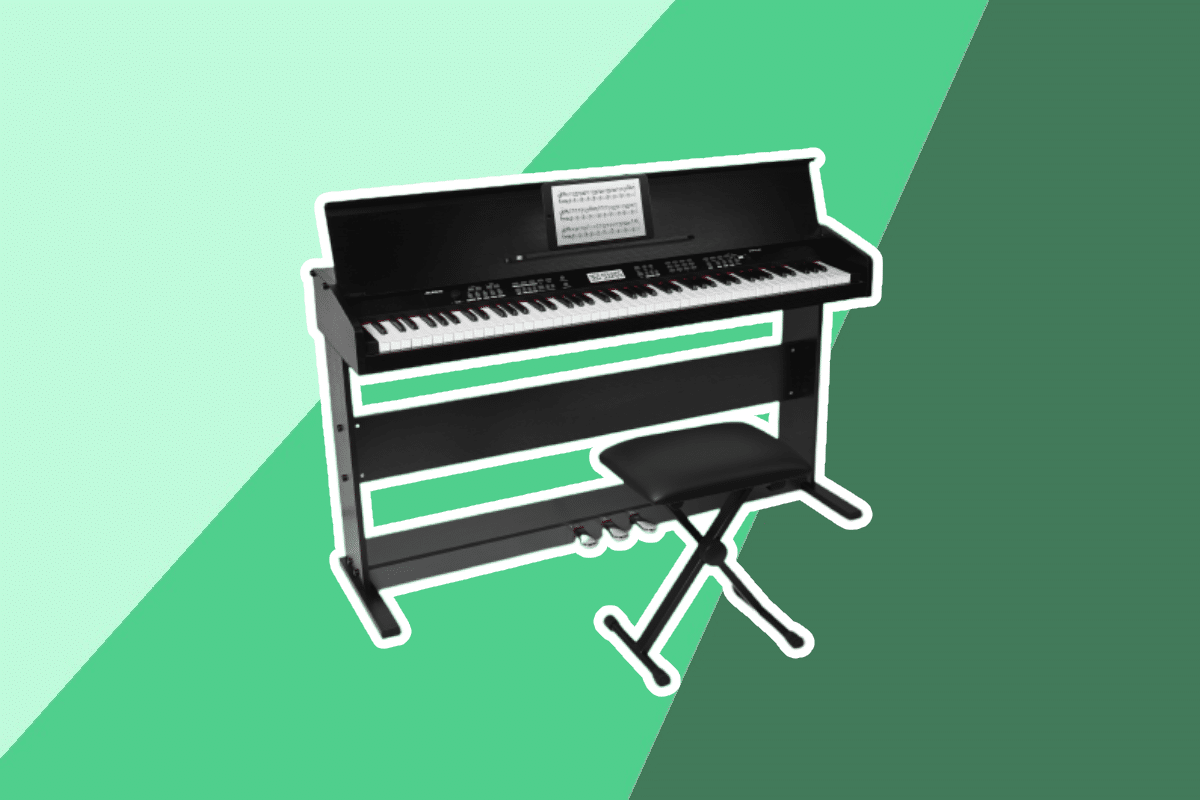
With a budget of $2000, most buyers assume they will get good quality digital pianos, but that is not always the case. One reason for this is remarkable marketing teams that make almost all options seem good enough. As such, it would be better if there was a surefire way to select the best digital piano under $2000. Fortunately, there is, although you might need to do a little preparation.
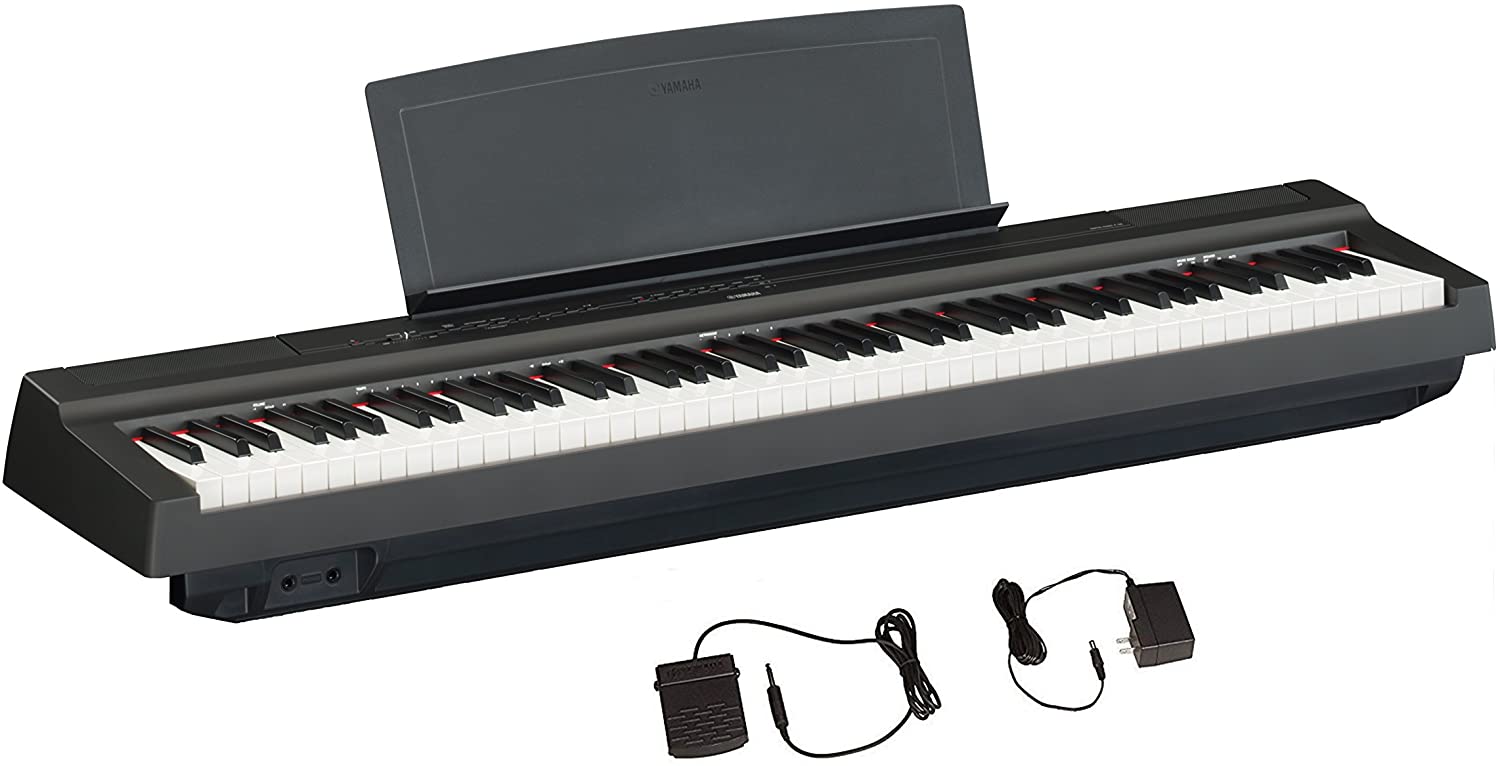



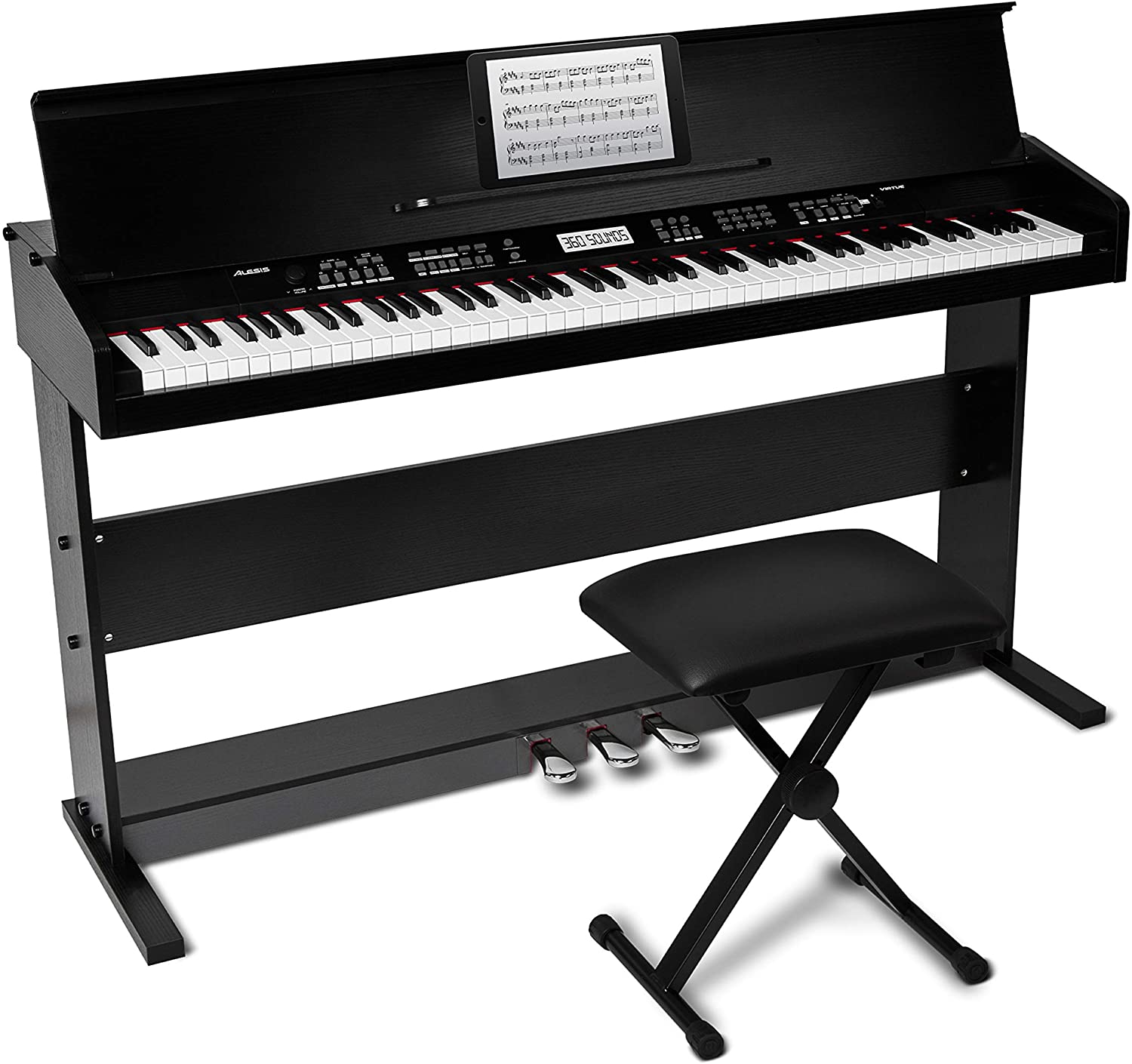

For it to work, you need to be educated about digital piano features. One example is that if you want to know anything about the piano's sound production capabilities, you should look into the presets, effects, functions, and polyphony features of the tool. Also, you need to know the physical nature of the piano before you purchase it. As such, information on the type and number of keys, connectivity, dimensions, and weight should be useful. Of course, collating this information and using it to make an informed decision significantly raises the chance that you’ll buy the best digital piano under $2000 in stores. Additionally, you get to see some of the top options available in the list below. And the Yamaha P125 gets to the to[ of the list and gets our Editor's Choice nomiantion.
| № | Name | Rating | |
|---|---|---|---|
| 1 | Yamaha P125 |
9,7
|
Check price |
| 2 | Casio PX560BE |
9,5
|
Check price |
| 3 | Alesis Virtue |
9,3
|
Check price |
| 4 | Alesis Recital Pro |
9,2
|
Check price |
| 5 | Casio PX-870 Black |
9,0
|
Check price |
| 6 | Korg XE20 |
8,8
|
Check price |
| 7 | The ONE Smart Piano Black |
8,6
|
Check price |
| 8 | Donner DDP-100 |
8,5
|
Check price |
| 9 | Yamaha CP73 |
8,4
|
Check price |
| 10 | LAGRIMA Digital Piano |
8,7
|
Check price |
Other features: Pure CF Sound Engine, 5 to 280 tempo range, split mode, 900 KB of internal memory

The 88-key Yamaha P125 goes first on this list of top-notch digital pianos. This option will cost you slightly above a ¼ of your $2000 budget. Of course, being this affordable does have the ripple effect of making some features look even more attractive.
For beginners especially, the Yamaha P125 will make a perfect purchase thanks to its GHS weighted action keys. When building your piano technique, these might be the best options in the Yamaha lineup to help you learn.
Additionally, for more experienced piano players, you needn’t worry about losing some of the notes you play in translation. The digital musical instrument can string together as many as 192 notes, and you’ll hear every single one being produced.
Also, the Yamaha P125 has an inbuilt speaker design allowing you to get in some practice even without a connection to any other output. That said, an Aux out connection is available, as is a stereo headphone jack giving you options to work with.
The digital piano’s weight should be another point of interest for you. As you will learn the more you read this write up, options that are lighter than this pick are quite hard to come by. Of course, by that metric, the piano is relatively more portable than other selections.
Effects on this piano also help raise its standing in this list’s rankings. Unfortunately, the opposite is true for the piano’s presets, which are underwhelming in their number.
If you were ever to open up the Yamaha P125, which we don’t advise, you would find the Pure CF Sound Engine inside. This engine gives you an impressive tempo range and some of the sound capabilities of the Yamaha 9 feet CFIIIS Concert grand piano.
There’s also the element of the split mode, which allows two different voices to be played simultaneously.
Other features: Multi-Dimensional Morphing AiR Sound Source, 550 built-in tones, 100 Hex Layer tones, 16-track MIDI recorder, Punch-in edit, Audio recording (WAV), 220 accompaniment styles

With the Casio PX560BE as the piano by your side, we are confident you’ll have an easier time cruising through your music creation journey. The 305 music presets will definitely help a great deal. Also, the polyphony in this piano will work even for the most experienced musicians as it can string along up to 256 notes.
Some have also aptly nicknamed the keys on this piano “the keys to success,” a sentiment we wholly agree with. This is because this hammer action II keyboard can mimic the feel and response of a concert grand piano. Also, remember that this purchase has an 88-key setup.
Furthermore, we have multiple connection ports that include MIDI in/out, the line out, audio in, among others. All the connection ports put together further cement the piano’s position as a musical instrument to take with you on stage.
Another feature that we would be remiss not to mention is the built-in studio to record your creations. The studio consists of two components, i.e., the 17-track MIDI recorder and the USB audio recorder. As for the latter, the created audio file is stored directly onto a USB stick.
If you plan on getting a tutor to teach you how to play this instrument, you are also in luck. One of its features allows you to split the keyboard into equal pitch ranges. As such, two people can play the device simultaneously without a glitch.
The Casio PX560BE also comes with a 5.3” touchscreen display that will make selecting music a walk in the park. In addition to that, the onboard mixer allows you to tweak settings for the sounds produced.
Another thing to note is the inclusion of 550 tones, all of which can be used to make unique music. Lastly, there’s the Multi-Dimensional Morphing AiR Sound Source that is the feature you have to thank for producing all sounds you get whenever you press the piano’s keys.
Other features: 30-watt stereo speakers, 160 built-in accompaniment styles, 80 demo songs, built-in metronome with a 30-280 BPM range, backlit LCD screen

Like the Yamaha CP73, the Alesis Virtue will be dropped off by Amazon delivery services with a stand and an adjustable piano bench. Notably, the stand is designed with an inbuilt music rest. Also, after assembly, you’ll see three pedals on the stand that might be quite instrumental in how you play your music.
The price point reflects an entry-level digital piano under $2000 as the tool is affordable by most beginners’ standards. Additionally, you can start your piano-playing journey with the 80 demo songs that have been built into the piano.
360 voices are also built-into the keyboard and are versatile as you can split or layer some of them at will. As you improve at your piano playing capabilities, you’ll find that this feature can be useful in creating new music.
Before we forget, the Alesis Virtue features a keyboard setup that is no different from a concert piano in the number of keys included. The keys in question are full-sized and velocity-sensitive. As for the touch response, you’ll have to adjust it to fits your needs and style of play.
Two similarities also exist between the Alesis Virtue and the Casio PX560BE. They are the ability to record and the lesson mode that would effectively divide the keyboard into two identical sections in terms of pitch and voice.
Remember that being able to record and playback your music may help you correct your mistakes as you learn more. 30-watt speakers are also inbuilt to allow you to hear the effects of every single key you press.
Other features: 10 piano demo, 12 voice demo songs, 20-watt speakers, a built-in metronome, Record Mode
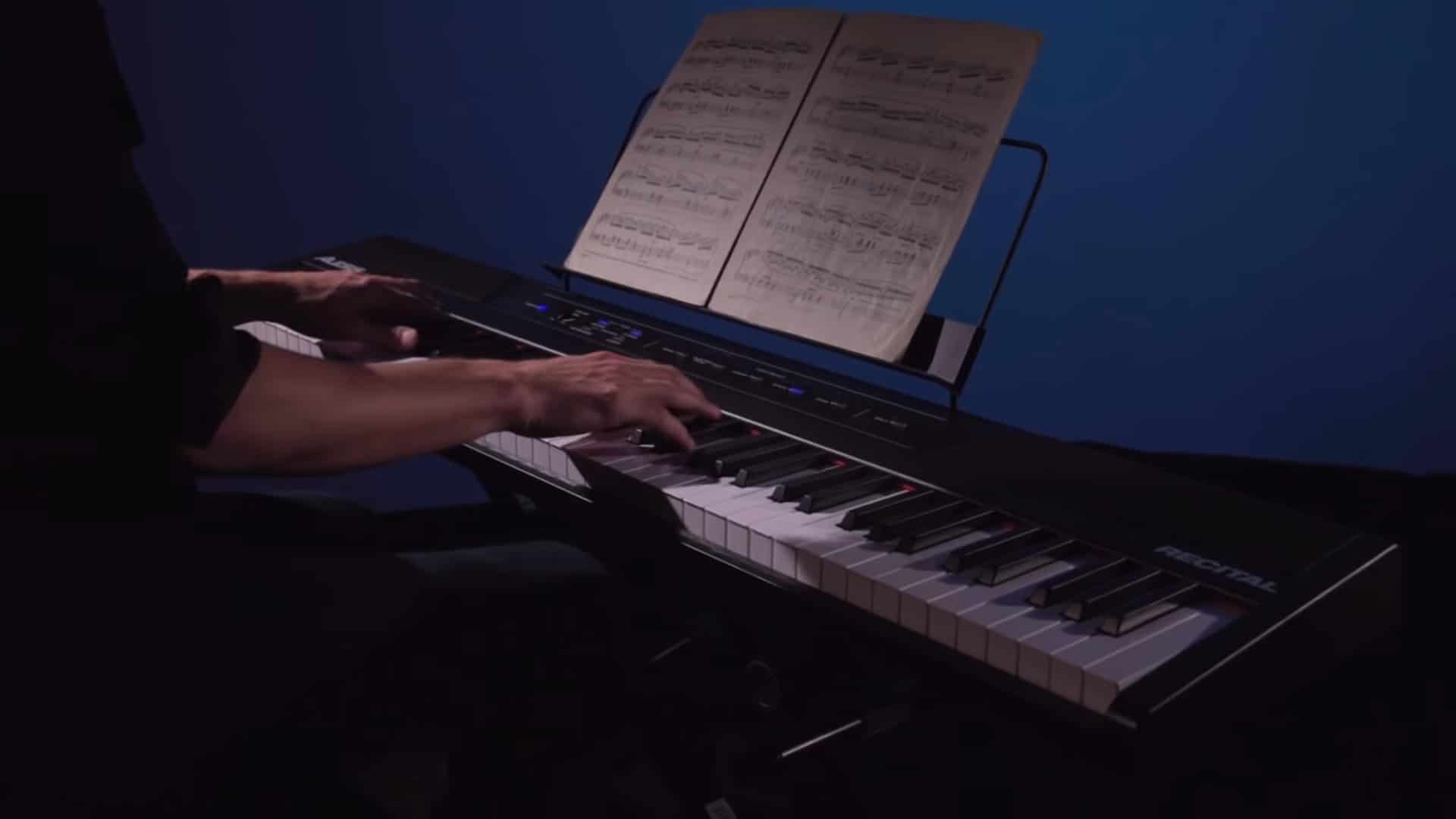
The Alesis Recital Pro is the second model by Alesis on this list. It also shows that the manufacturer has narrowed down what it takes to produce a high-quality portable digital piano under $2000.
Like its predecessor, the Alesis Virtue, this pick seems relatively affordable. It also comes with adjustable touch response. Aside from that, the keys in this piano model are of the hammer action variation.
Features that may make it easier to get acquainted with playing the piano are the built-in metronome, the record mode, and the various demos provided.
As for the effects and functions, they aren’t that many, but they will provide your sound with some versatility. Of course, the more you learn, the more you’ll find this versatility to be useful.
For a less than $400 piano, the connectivity options should also be good enough, although you might need to upgrade after some time. Also, while not mentioned above, you get a subscription for free interactive piano lessons as well.
Other features: 10 concert play, 60 music library songs, 10 user songs, 90kB per song, metronome, three-pedal unit
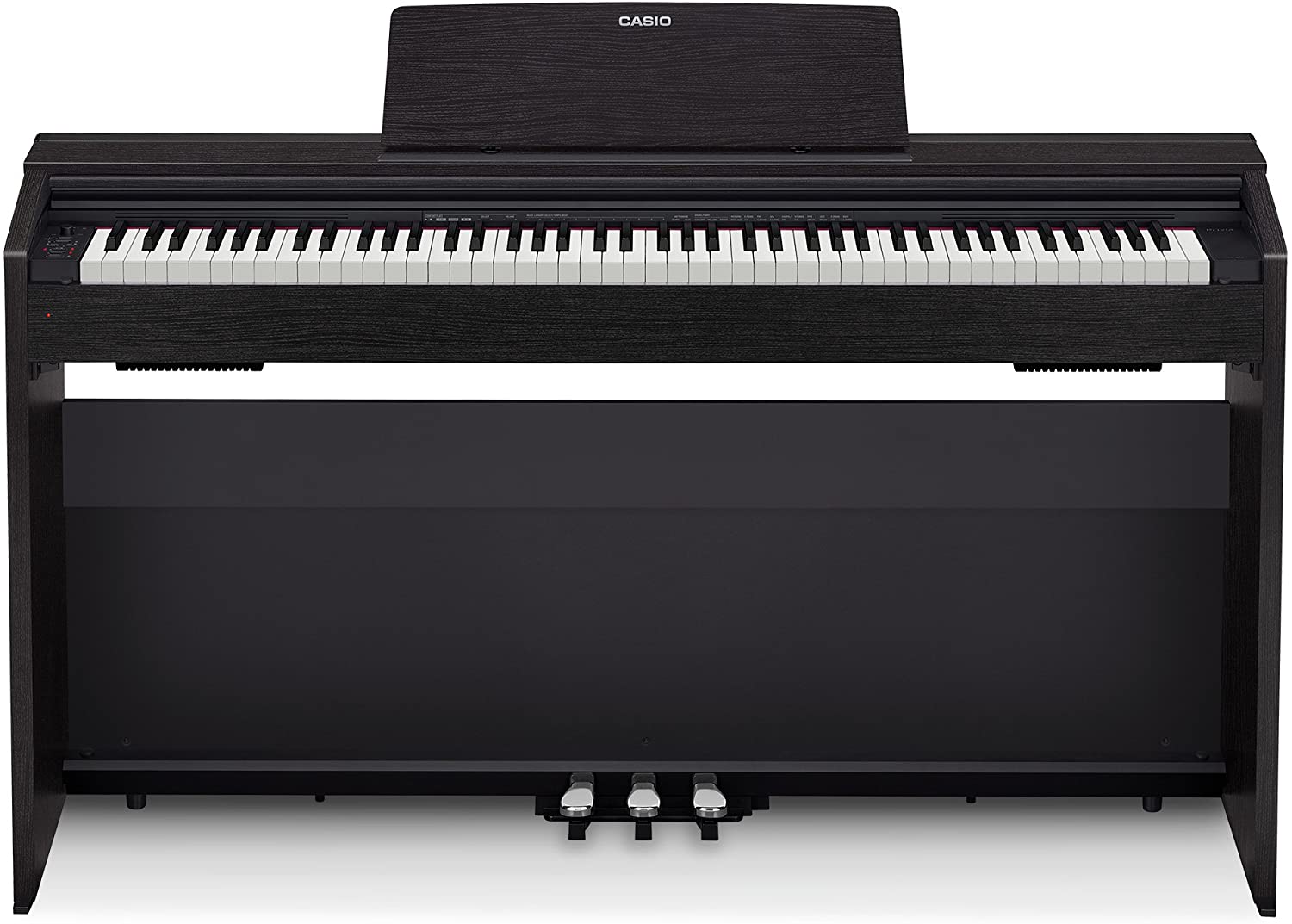
The next digital piano in our lineup is the Casio PX-870 Black. Any time you see the terms “weighted hammer keys,” you should know that you’ll be impressed with the keys’ action.
Additionally, the piano seems to be using the AiR engine to produce sounds. Since this feature has proved impressive in other Casio Piano models, most users won’t have any problems or issues with it.
Some digital piano players may be disappointed that only 19 presets are included in the machine. However, since you can split and layer them according to your desires, they become more versatile.
Also, achieving complex symphonies will be a cinch owing to the 256 note polyphony provided. This would also make the PX-870 ideal for stage performances.
The 40W speakers on this Casio machine also deserve praise. As compared to other digital pianos listed, this is the most powerful inbuilt speaker thus far. Furthermore, it has better sound capabilities allowing you to hear the music notes as they are.
The speaker is further complemented by an equalizer. That said, this feature will allow you to hear a well-balanced sound even when using other sound outputs, e.g., monitor speakers and headphones.
Lastly, the ability to plug in your computer unlocks some other features in the piano that you might appreciate.
Other features: 12-track, 999 songs, MP3 recording; 21 Demo songs, MP3, WAV, SMF

If you enjoy having more preset options, the Korg XE20 is for you. It also does not fall behind in terms of polyphony or where the keys’ design is involved. The connectivity options may also serve to seal the deal for you as they are impressive as well.
Where the digital piano’s weight is concerned, you have nothing to worry about if you will be transporting it to various places as you perform. However, the lightness of the piano also means that you will not be provided with a stand.
Nevertheless, the price of this tool is significantly less than $1000. As such, you may have some money left over to buy the stand. You should also note the 999 songs already present in the device. As you’ll see, once you own this tool, you can use the songs as a stepping stone to learning how to use the piano and play better.
You even have MP3 recording so you can playback your last session and correct any mistakes you made. If none, you can comfortably share your creation with friends, family, and other musicians in your circle.
One somewhat disappointing element is that there aren’t any effects in the piano.
Other features: LED lights, supports iOS and Android, 28 GM-programmed timbres, 4 drum sets, recording function
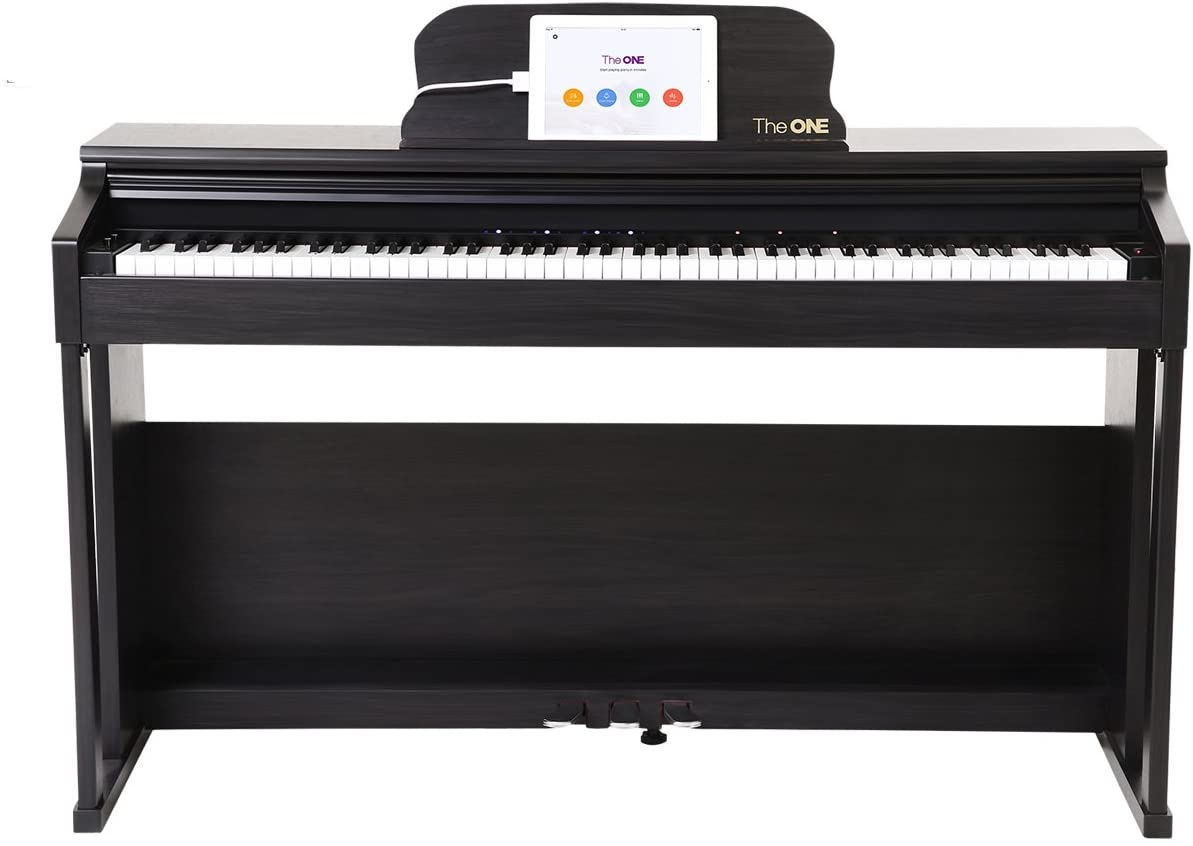
Another piano that can help you graduate from a complete novice to a pro who can play on stage is the ONE Smart Piano. Depending on the bundle you pick, you may be provided with a wooden piano stand, which also comes with three pedals. The pedals are a feature this piano shares with the Alesis Virtue.
One reason why this piano is considered a top-notch beginner option is the inclusion of LED lights. These may help guide you on which keys to play next when you are learning the tools of the trade.
Additionally, if you want to use your iOS and Android devices with the piano, you can. There is a free app that you can download with these devices that will grant you access to sheet music, videos, and games. Notably, all of these can help you up your piano playing game.
The ONE Smart Piano also features a praiseworthy, hammer action 88-key setup. Also, if you’re a fan of playing back your sets so you can listen for any mistakes, then this pick will likely impress you.
Other features: built-in amplifier, 25W speaker, wooden stand
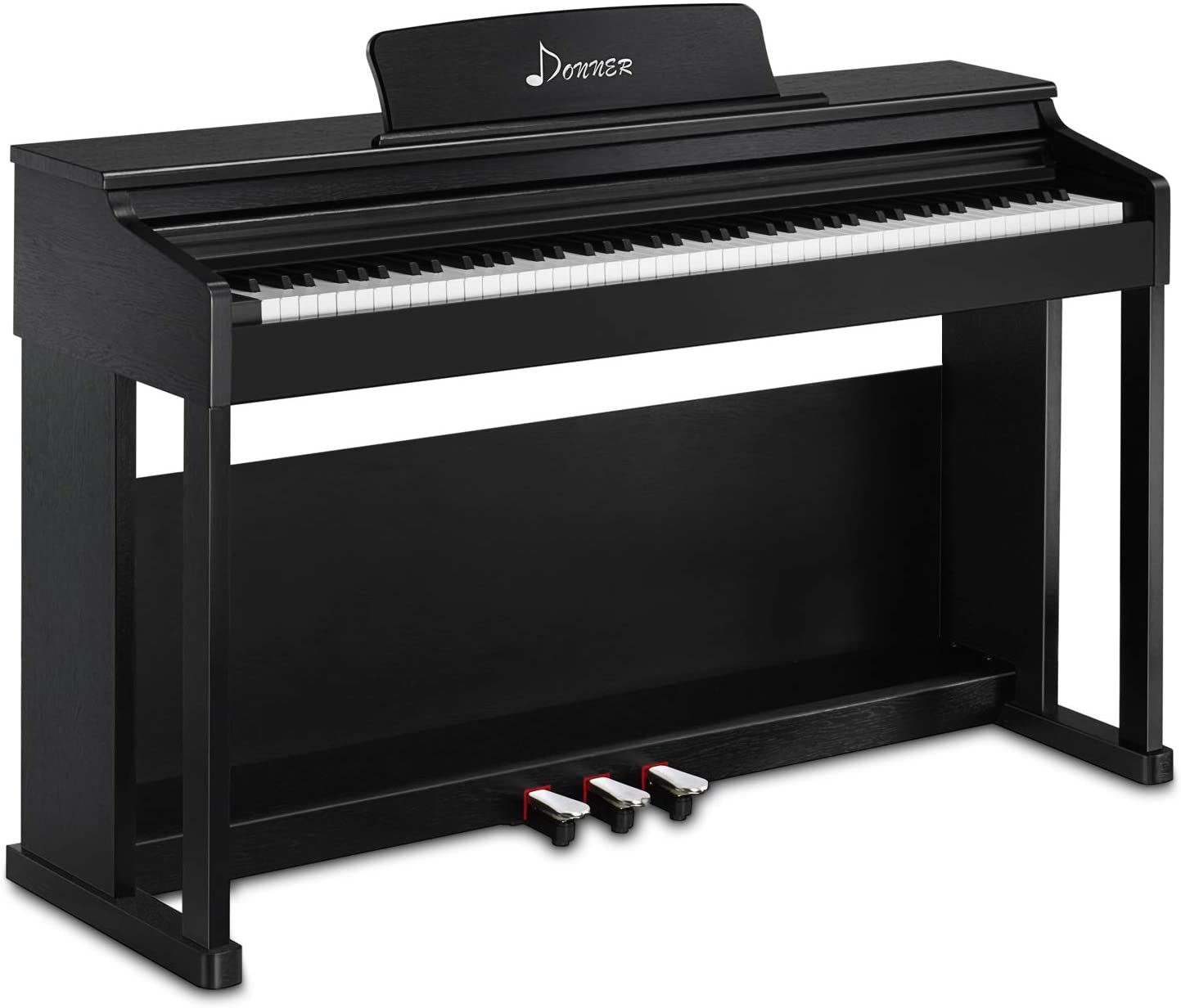
For a fully weighted keyboard setup, you can purchase the Donner DDP-100 digital piano. In terms of effects, you get the same selection as you would for the ONE Smart Piano. It’s also not hard to note the piano stands are quite similar, even in pedal placement.
Notably, you can listen to your music as you play it thanks to the built-in amplifier and the 25W speaker. Lastly, the piano is one of the more affordable picks to make it onto this list and has standard connection ports.
Other features: AWM2 tone generation, Full Dot LCD display
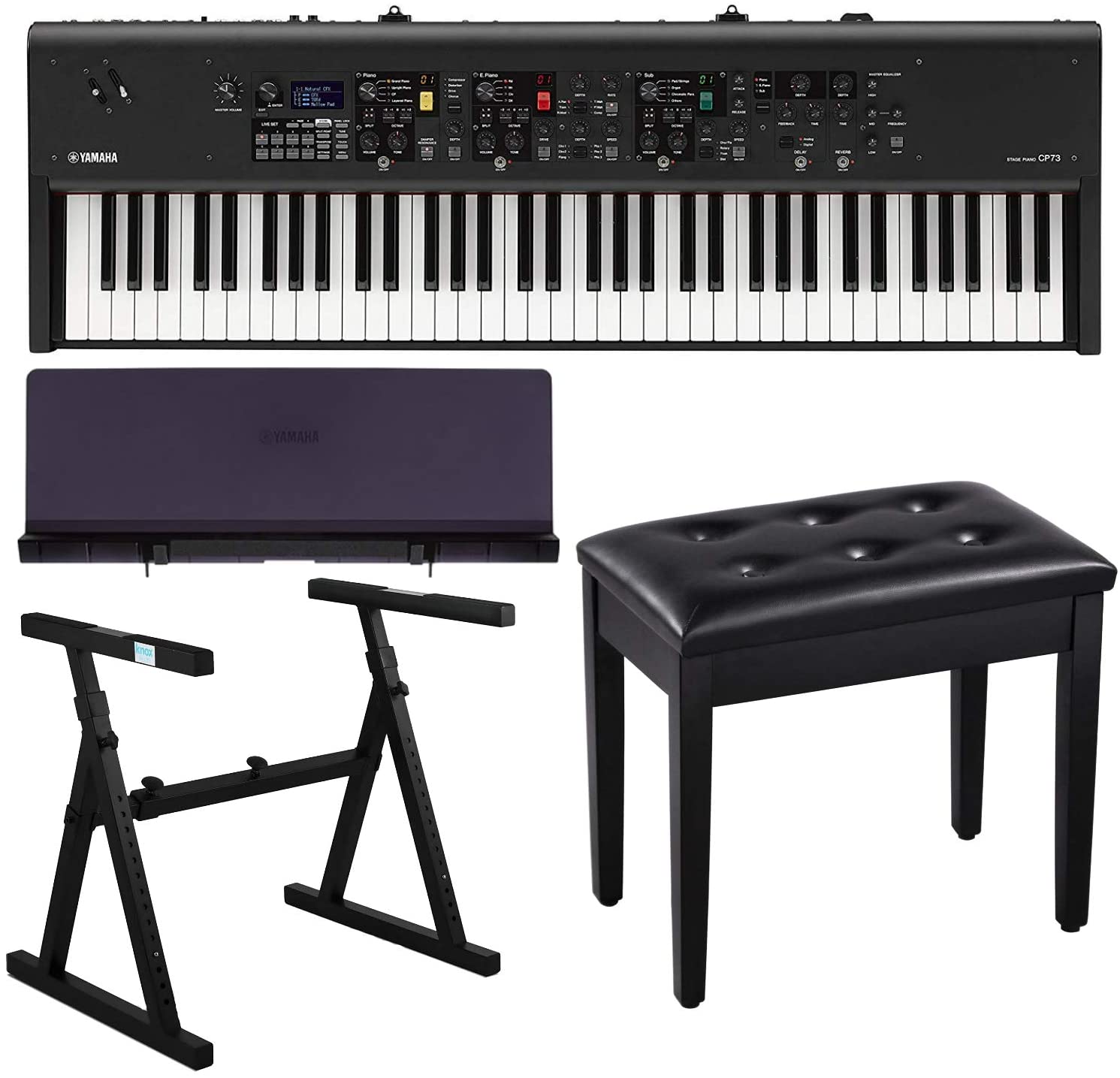
If you’re looking to spend the full $2000 amount, the Yamaha CP73 is a promising prospect. You may have to give up on an 88-key setup if this is your selection. However, there are other features you gain as a result of the design as well.
The accessories included are a stand as shown in the image, a music rest, and a black padded piano bench. Additionally, the bench comes with some inbuilt storage space.
The sounds that this piano is capable of have been incorporated from three different acoustic grand concert pianos, of which two are from the Yamaha lineup. They include the Yamaha S700, Yamaha CFX, and the Bösendorfer Imperial 290. As a musician, the level of expression you can achieve with the CP73 is thus unmatched in this price range.
Despite the keys being fewer in number than in any other digital piano in this write-up, their quality is astounding. First, they come with synthetic ebony + Ivory key-tops, although the bodies are made of natural wood. It’s thus unsurprising that you’ll find the keys more responsive and less sticky.
The manufacturer uses GHS keys in this setup, just as they did in the Yamaha P125. Furthermore, there is an additional sensor in the piano’s design, which makes it possible to repeat notes even without completely releasing the keys.
Next, the controls might seem a bit complex, but you needn’t worry about programming or menu diving to find specific functions due to the one-to-one interface. You can thus shape sounds with relative ease to give you the desired results. Let’s not forget the full dot LCD display that makes using some functions of the piano easier.
Connectivity in this musical piece of equipment is also befitting of a tool of this caliber. Additionally, if you have the right skill set, you can even take this tool up on stage and perform an exceptional musical set.
The presets and polyphony capabilities are also impressive attributes of the Yamaha CP73. However, in terms of polyphony, this tool is definitely overshadowed by the P125.
Other features: 3-pedal system, 200 present rhythms, LCD display screen, 80 demo songs, built-in stereo speakers, slide cover design, padded bench
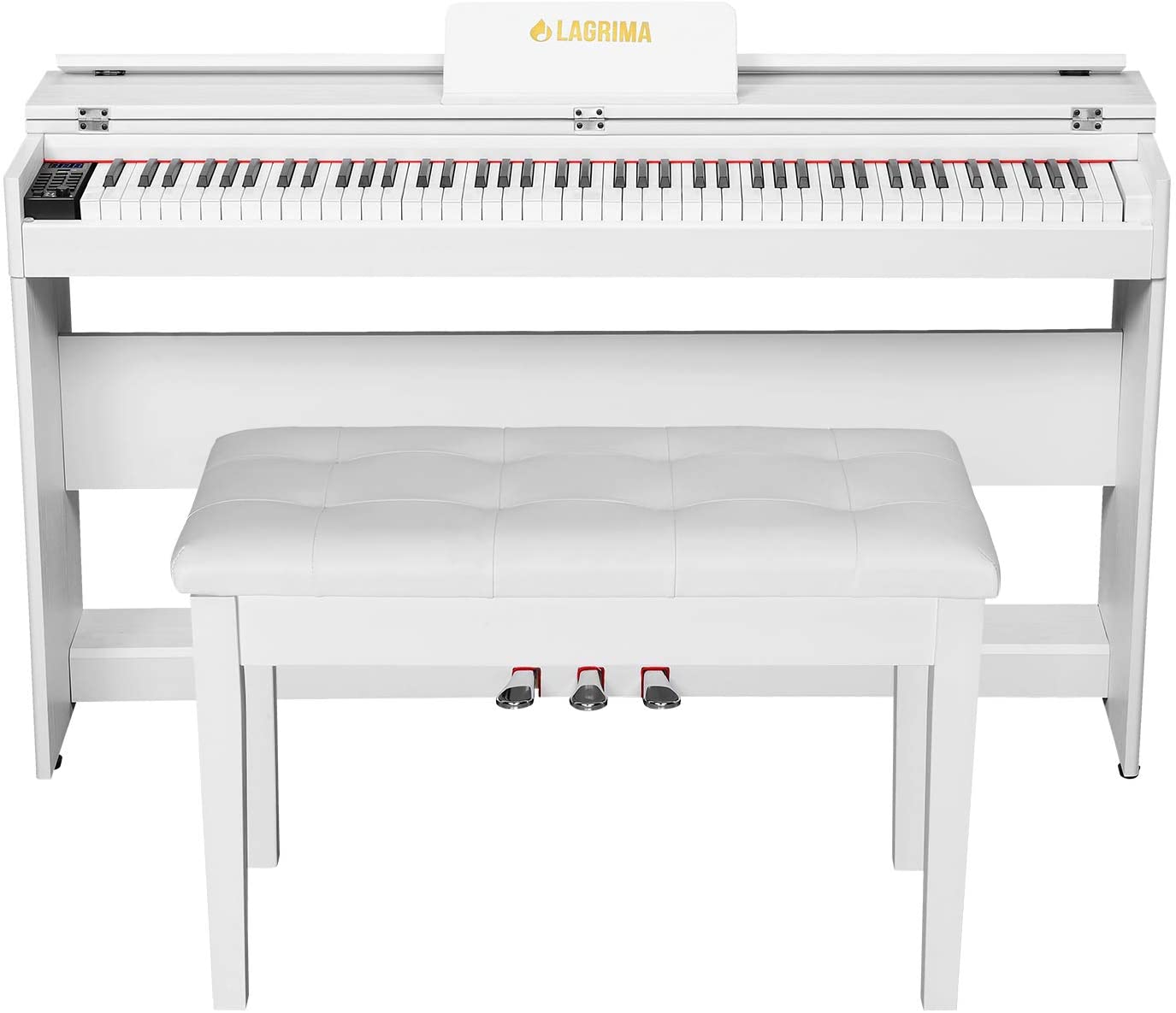
The LAGRIMA Digital Piano joins the ranks of other options listed with a three-pedal system. Overall, this piano is one of the more well-rounded picks that made it onto the list. There are several reasons for this. The keys, for instance, are full size and fully weighted.
The next impressive feature is the presets. Clearly, you’ll have enough options in terms of the sounds you can produce.
Effects and functions are another positive for anybody looking to own this piano. It’s not visible from the image above, but there is also a small LCD screen added. When navigating through the rhythms and demo songs, this tiny screen might prove handy.
You also have enough accessories to successfully play this piano. This includes the stand, a bench that doubles as storage space, and a music rest. Built-in speakers are also part of the machine’s setup. As such, it’s quite surprising that this digital piano is as inexpensive as it is.
From the piano’s list above, you can probably tell that picking one might be quite tricky. After all, the factors you need to account for are many and quite confusing. However, with this buying guide, you’ll find you don’t have to stumble around the process and that you have a straight path to the digital piano selection of your dreams.
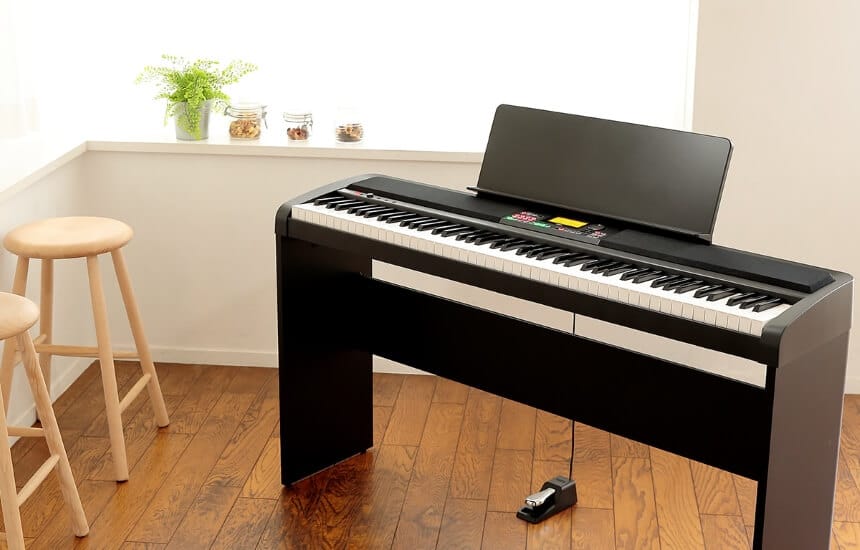
The first and probably one of the more apparent benefits is the lower price. As the list of digital pianos above shows, price points can start at about $300 and will keep rising into thousands of dollars. In comparison, even the cheapest acoustic piano will be priced at around $3000.
One reason people in the past preferred acoustic pianos was the keyboard action and the authentic feeling of the keys. This is no longer exclusive to acoustic pianos as manufacturers have figured out ways to mimic their touch and feel as they make digital options. As such, you’ll find keyboard action to factor in heavily for a lot of digital piano shoppers.
Minimal maintenance is another benefit of getting the digital piano. It doesn’t need to be tuned every so often. The sounds are programmed into the device, and thus they will remain consistent as long as you own the musical machine.
The ability to use headphones is massively underrated but crucial for digital piano shoppers. This is a feature that doesn’t work in acoustic pianos. If you’re practicing at home, having headphones on means you don’t have to disturb anybody in the house or even your neighbors.
Another reason why acoustic pianos were largely preferred in the past is the authentic and rich sounds they produced. At first, manufacturers had a problem replicating this, but these days the sound quality is quite impressive. Consequently, you can get similar resonance and sound at a lower price.
Additionally, by using acoustic pianos, you realize their range of sounds is quite limited compared to the digital option. After all, the latter has incorporated the sounds of different instruments in its setup.
Lastly, the background rhythms available in digital pianos help you maintain your rhythm as you play. There are other optional benefits as well, such as lesson modes, recording capabilities, new sound technologies, and more that you’ll see as you look over your options.
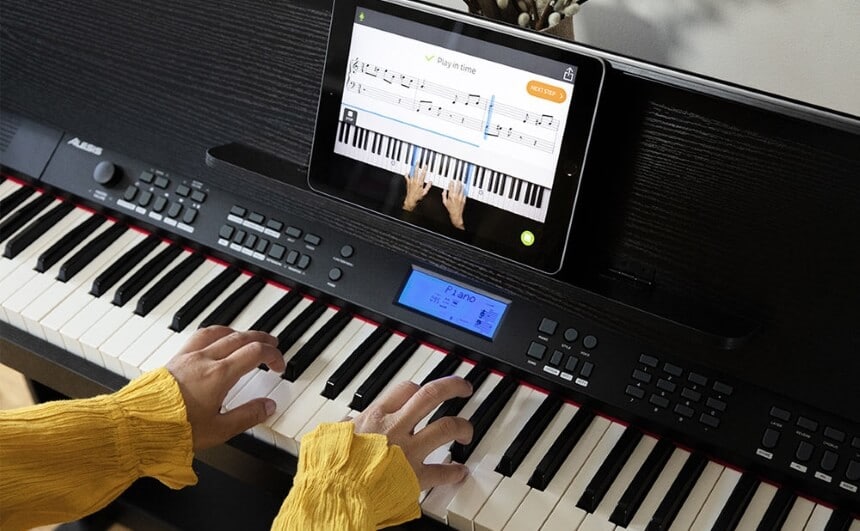
Despite digital pianos being different, you have to remember that they are modeled from the acoustic piano, which many people still prefer. This is because the acoustic piano has a unique feel and design that makes it a joy to play. Piano manufacturers try to stick as close to this design as possible to give the same feeling.
Since acoustic pianos are designed with 88 keys in their setup, this is a theme you’ll see recurring in digital pianos as well. That said, other digital pianos like the Yamaha CP73 have fewer keys. This is both good and bad. Having fewer keys means a smaller body that is easier to transport. Conversely, the tone range is more limited than in an 88-key setup.
As for the keyboard action, there are various picks to choose from as well. Ideally, most people want the authentic feel and touch of a regular acoustic, and some of the actions might help with that. As such, if you find a piano that fits the bill at your price range, you should select it.
The touch response should also be as close to the real thing as possible. As such, it would be better if the keyboard can detect the slightest touches and the speed with which you press the keys. Some picks like the Alesis Recital Pro even have an adjustable touch response that can be tweaked to allow you the ultimate playing freedom.
Sound quality can also make or break the piano. As a beginner, you may not notice the small differences in sound that determine the audio quality. However, as you advance, you’ll want better sound to make full use of your musical genius. Notably, sound quality improves the higher you go in terms of price.
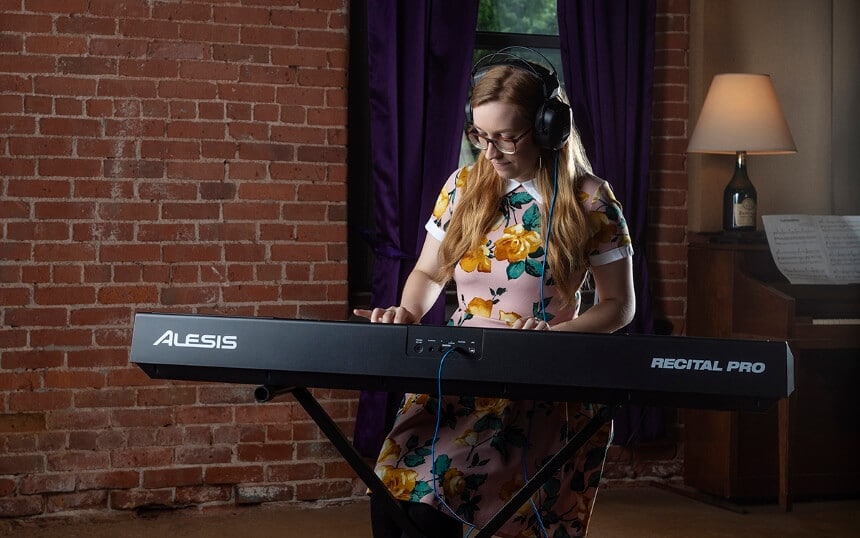
An advanced player, on the other hand, may find a 64-note polyphony to be constricting to his playing style. However, a digital piano like the Casio PX560BE with its 256-note polyphony may allow them to play to their full musical potential.
If you’re not coming across digital pianos for the first time, you know that presets can change the way you play the tool and the musical results you get from the instrument. Interestingly, sound versatility will increase with more presets.
Some of you might not need these presets to make music, and in such a case, the Donner DDP-100 and other pianos like it may be fine purchases. Others want to make their work as easy as possible and will thus go for pianos like the Korg XE20. Both are okay as long as they suit your needs and playing style.
Effects can help you alter the sounds coming from your piano to give you the desired results. As such, having more effects/functions is just like having more presets in that the more you have, the more versatile your piano is.
Unfortunately, in some cases, the effects have been entirely exempt from the design of the piano. If you’re a novice player, you might appreciate this as you can focus on the more basic elements of playing the piano. Conversely, if you want to push your musical creativity to the limit having more effects in your purchase will do you good.
The controls you get with your digital piano purchase will also vary from model to model. One example of a control setup is seen in the Yamaha CP73, where you have a one-to-one interface. This means that each piano function has a dedicated button. As such, it may be easier to control this piano than it would be to use one with fewer buttons that offer shared functions.
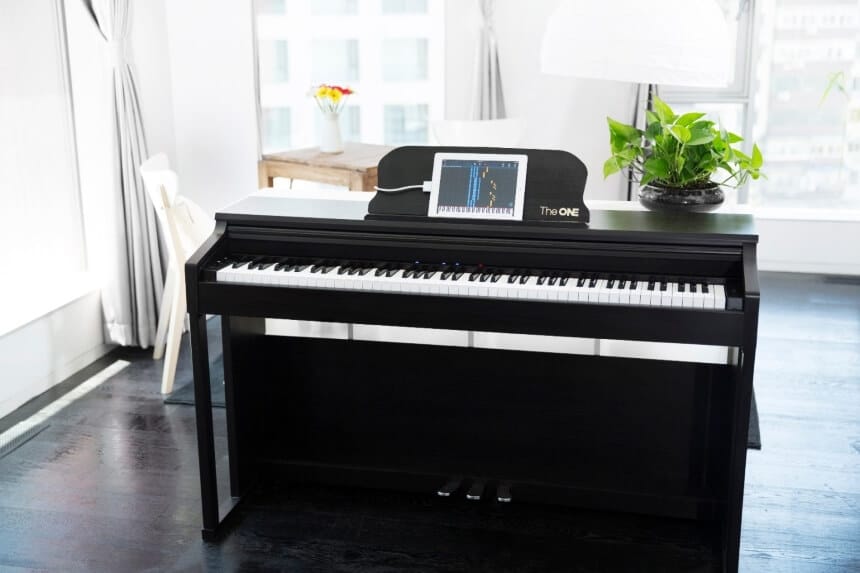
Notably, if the number and types of connection ports on your piano are limited, the types of sounds and inputs you can incorporate into the playing set will also be limited.
Additionally, the connectivity also determines your sound outputs. This includes monitor speakers, headphones, USB sticks, and more. As a result, having more connectivity is always a better idea, especially if you are a professional who plays on stage.
Some of you are looking for pianos for your home studio. Others want digital pianos to take with them on stage, off stage, and on tour. This would necessitate that the pianos be portable. Of course, some of the options above fit the bill, while others don’t.
The Korg XE20 is clearly the most portable one as its weight is about 25 pounds and it doesn’t come with a stand. In comparison, the ONE Smart Piano that comes with a stand and weighs more than 100 pounds will be much harder to move.
Remember that only you can decide whether portability is a make it or break it feature for the piano purchase.
Also, quite a high percentage of the pianos in the list above come with built-in speakers. This is one way for you to listen to your audio output if you don’t have headphones and are not connected to monitor speakers.
Nevertheless, the inbuilt speakers’ quality is another thing that will largely vary from model to model. The 40W speakers on the Casio PX-870 Black, for instance, are much better than the 25W speaker on the Donner DDP-100. This is in terms of sound quality and power.
The former can thus be used for performing in a small enclosure where the speakers’ sound will reach all corners of a room.
Sometimes you may also encounter the lesson function. Pros will likely not need this feature, but it is different for beginners as they need all the help they can get.
Lesson mode, as seen in the Alesis Virtue, will split your 88-key keyboard into two equal sections. This is in terms of pitch, voice, and the number of keys.
Beginners can thus sit together with their instructors in front of the piano and mimic everything they do. This might help make learning easier.
You can see that almost all the pianos mentioned above also have extra features. One example is the LCD screen in the LAGRIMA Digital Piano. The same piano also has a padded bench as an accessory and even demo songs included.
Almost all of the extra features add value and functionality to the digital piano. As such, more extra features will definitely be better in a digital piano purchase. Also, you’ll have to place value on each of these extra features based on what you deem most important, and that should help you make a better selection.
The Yamaha P125 is our overall best pick from the list above. The piano is affordable, has impressive polyphony and effects features, and is lightweight.
Another top pick is the Casio PX560BE. This option delivers on the polyphony, presets, and effects end. Furthermore, you can connect it to lots of other inputs and outputs that will allow you more freedom in your music journey.
As for the Alesis Virtue, which is our third favorite. For a low price, you’ll get an entry-level digital piano with an 88-key velocity-sensitive keyboard and 128-note polyphony. It features adjustable touch-response and 160 built-in accompaniment styles
These three digital pianos that you can get for under $2000 are our favorites. That said, we didn’t consider your needs when selecting them as our top three, and thus, you may have different selections in mind. If you do tell us about them in the comment section below.